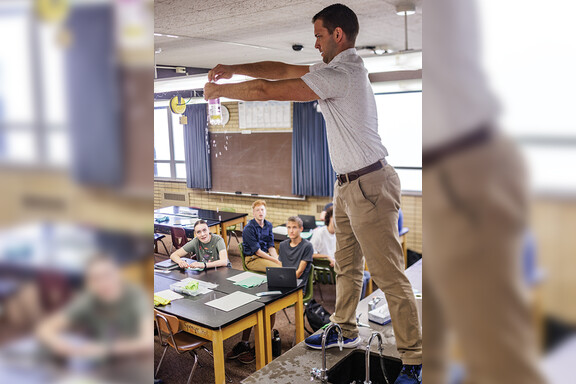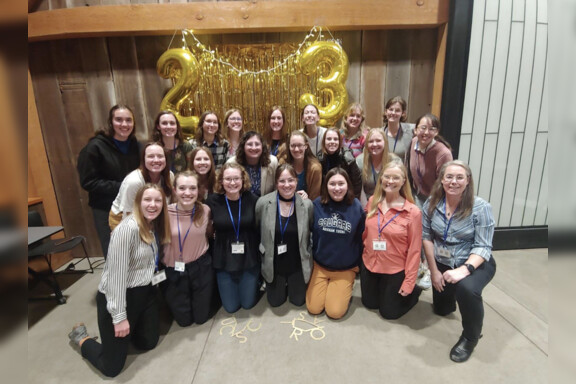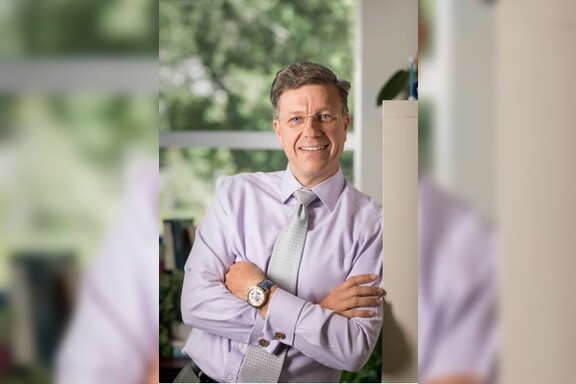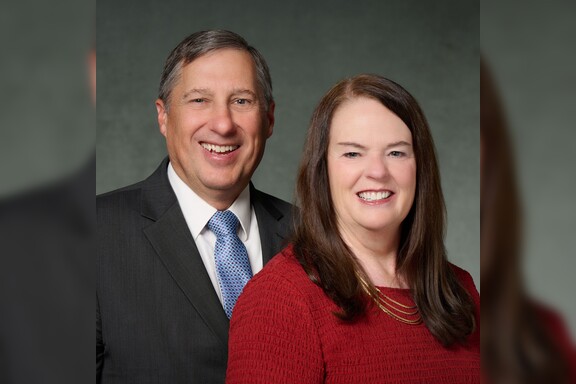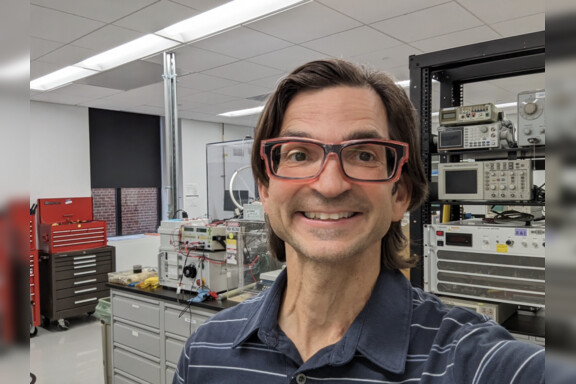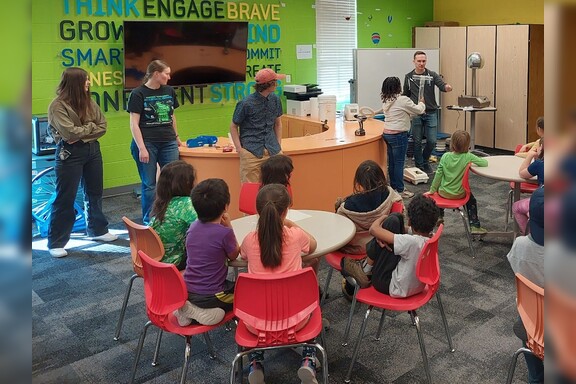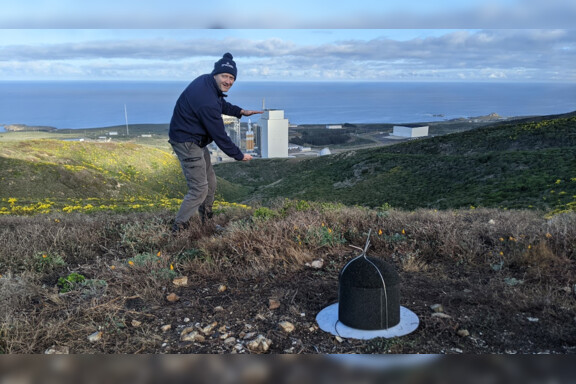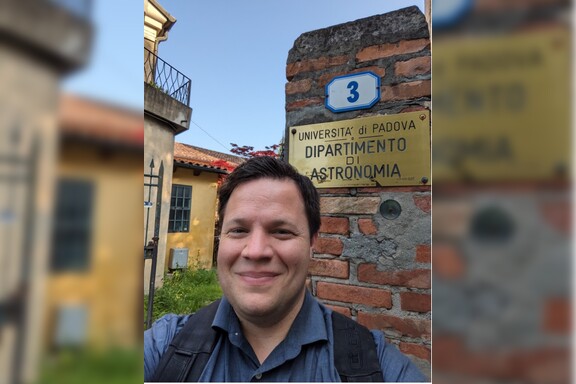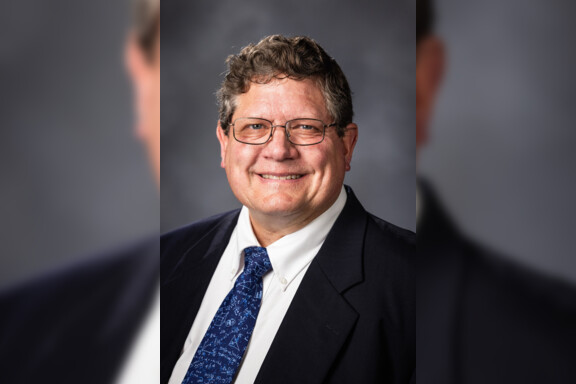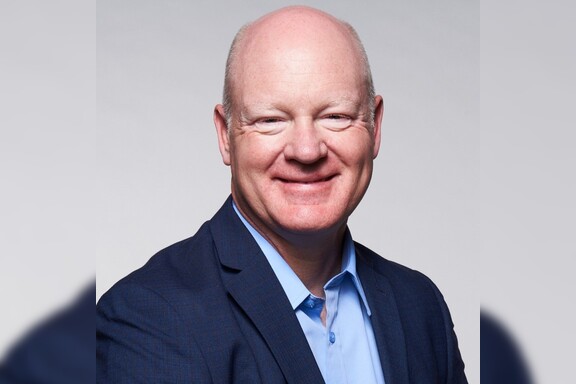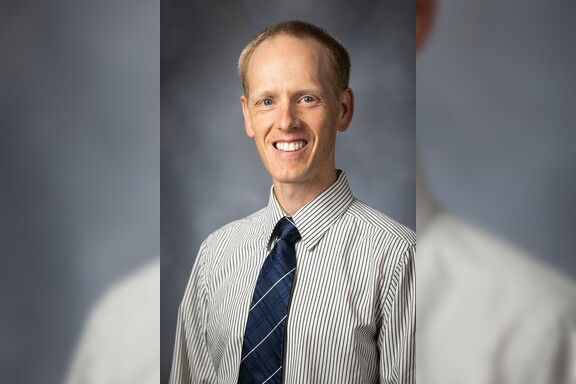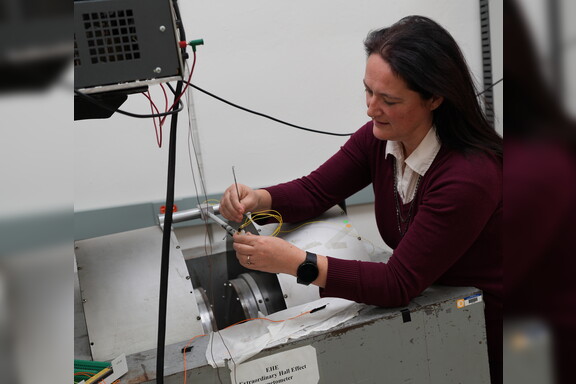In 2019, Dr. Richard Sandberg left the position he’d held for a decade at Los Alamos National Laboratory to accept a position in the Department of Physics and Astronomy at BYU. He brings both expertise and a fresh vision to the department’s already well-established materials and optics research groups. In his opinion, “what is limiting our ability to improve technologically is mostly the fact that we can’t make better materials.” Dr. Sandberg and the students who work with him use ultrafast lasers and x-ray optics to improve scientific understanding of imperfections in materials and how those materials degrade over time. His work has implications for fusion energy research, the manufacture of better hard drives, and the construction of longer-lasting medical devices including stents and joint replacements.
Dr. Sandberg describes his research as straddling Atomic Molecular Optics (AMO) and Materials Science. He and his students investigate the properties of different materials at the nano scale. Using x-ray diffraction imaging techniques, they study how materials react to strain and eventually break, how the imperfections in hydrogen fuel capsules affect atomic fusion experiments, and the magnetic properties of materials used in hard drives. The Sandberg group has access to off-site accelerators at Stanford and Argonne National Labs. They have “beamtime” three or four times a year and spend the rest of their time analyzing and reconstructing the massive amounts of data that they receive from these experiments. During the coronavirus pandemic, the team has turned to computer modeling, remote access of particle accelerators to gather data, and fine-tuning a reconstruction algorithm. Dr. Sandberg jokes that this pivot to computer-focused research makes his students feel more like data scientists than physicists.
His passion for science is infectious, and he loves to see things “click” for others. He loves to help students go from novice to experienced. Dr. Sandberg is aware of the shortage of US citizens in the STEM fields at national labs and has made it a personal mission of his to help students be successful and fill the national need for high-quality researchers at national labs.
Some of Sandberg’s skill in creating independent students comes from his family life, as he and his wife are raising eight children. Although his main hobby is just being involved in his kids’ lives, some of his other hobbies include trail running, camping, and landscaping his new home. His ambition stretches beyond the optics lab, and he aims to run a marathon. Dr. Sandberg also loves the Restored Gospel, believing that science and religion go together and should coexist. Dr. Sandberg says, “the imperfections of materials are what give them strength”, and he believes the same of his students and everyone else he interacts with.
(Student contributors: Merlin Hart, Joshua Rasband)
News and Events
